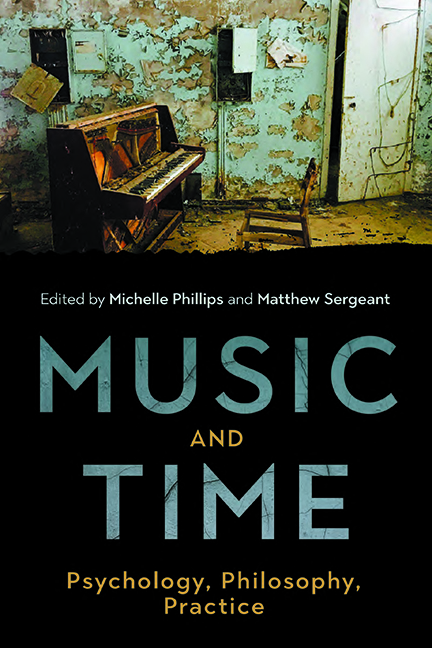7 - Live Coding as a Theatre of Agency and a Factory of Time
Published online by Cambridge University Press: 07 October 2022
Summary
Introduction
‘Live coding’ has become a performative artistic practice that lies at the intersection of programming and artistic creation, often with an emphasis on music. Typically, live coding performances are presented on a stage, upon which there is a (personal) computer and a human producing code in one of a number of programming languages in real time. The screen of the performer is usually projected so that the audience can see the edits of code being produced. Sometimes, this code may be interpretable by the audience:
sound “kick kick clap kick”
As part of this, the audience thus witnesses the computer following the code/instructions, such as by producing an audio signal; in the example above, a musical pattern of three kick drums and a classic handclap sample. The visual cue provided by the code is important. Since the audience see on the screen that the clap falls on the third beat, they may try to adjust their cognition to ‘perceive’ the clap as the third beat of a 4/4 bar.
As our performance continues, with this programme running in a loop, the performer edits the code:
sound “kick kick clap*2 kick?”
Now the audience hears two kicks and two faster claps, sometimes followed by a rest and at other times by a kick (the ‘sometimes’ induced by the inclusion of the ‘?’). The performer keeps editing the code and the music continues to change until either the computer crashes; the programme fails; the performer gets lost in the code; or the prescribed performance duration is over.
Live coding is therefore the practice of writing and manipulating algorithms by programming (writing code) in front of an audience, and thereby exposing that audience to the effects of the code, which usually (but not always) takes the form of an audio-visual output: music, sound art, visuals, poetry, or dance, for example. Live coding is neither a form nor style of music; it is an audio-visual practice that draws extensively on many forms and styles of music. Live coding is also a thought-experiment with various side-effects, some of which can be framed as music.
- Type
- Chapter
- Information
- Music and TimePsychology, Philosophy, Practice, pp. 112 - 126Publisher: Boydell & BrewerPrint publication year: 2022



